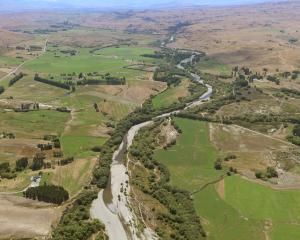
Niwa climate scientist Gregor Macara said the month was characterised by lower-than-normal mean sea level pressure over and to the south of the South Island, and higher-than-normal pressures over the central and northern Tasman Sea.
"This produced more westerly airflows than normal over most of New Zealand, with more southwesterly airflows over the northern North Island.
"These westerlies and the associated foehn wind effect contributed to a relatively warm and dry month for northern and eastern parts of the North and South Islands."
Temperatures were above average or well above average for much of Canterbury and eastern Otago, Mr Macara said.
By contrast, temperatures were below average for parts of Fiordland and western Southland, and temperatures were generally near average for remaining parts of the southern regions.
Increased sunshine was also a factor, with seven locations (from as far north as Auckland to as far south as Middlemarch) observing record or near-record high sunshine hours for September.
In contrast, September temperatures were lower than average for southwestern parts of the South Island.
The mean maximum temperature in Te Anau was 10.4°C (2.5°C below average), making it the town’s lowest September mean maximum temperature since records began in 1963, he said.
The nationwide average temperature in September 2024 was 11.2°C.
This was 0.7°C above the 1991-2020 September average, making it New Zealand’s 9th-warmest September since Niwa’s seven station temperature series began in 1909.
The westerlies associated with the predominant weather pattern also brought regular fronts, which delivered abundant rain for southern and western parts of the South Island, including the hydro lake catchments, he said.
"As a result, hydro lake levels increased considerably during September.
"This alleviated concerns over the low lake levels experienced during the prior winter season."
Rainfall was above normal or well above normal for Southland, Otago, Canterbury (south of Ashburton) and the West Coast.
Breaking records for September rainfall totals were Lake Manapouri (West Arm) with 864mm, Clyde with 89mm and Tiwai Point with 171mm.
Several other locations recorded more than 300% of their normal September rainfall, including Cromwell, Alexandra and Queenstown.












